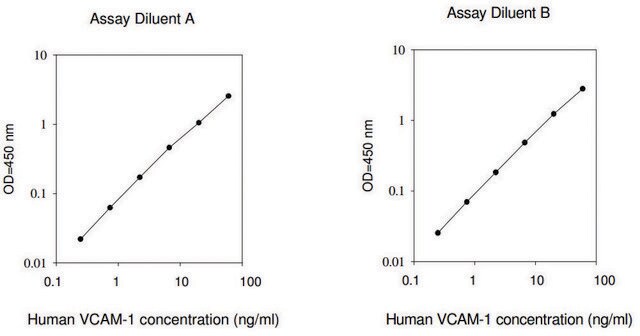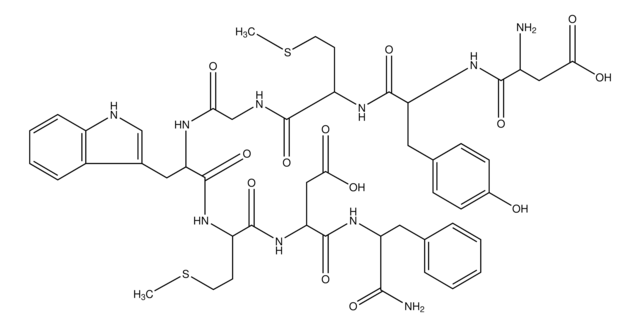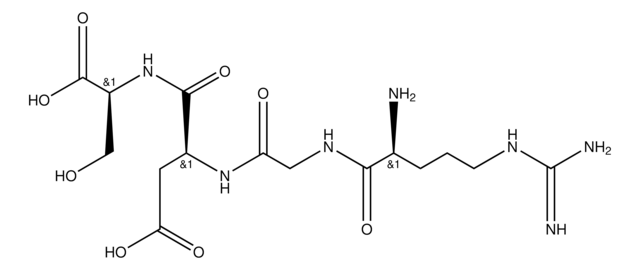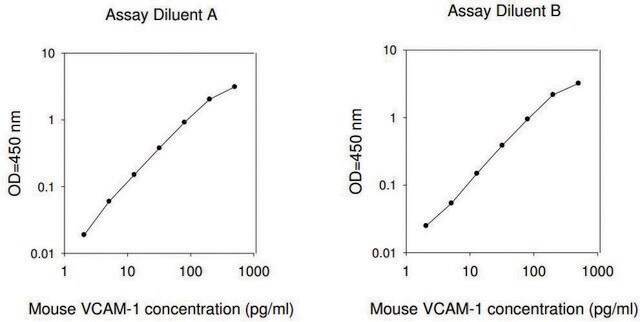T6515
Cholecystokininfragment 30-33 Amid -hydrochlorid
≥95% (HPLC)
Synonym(e):
CCK-4, Gastrin Tetrapeptide, Tetragastrin, Trp-Met-Asp-Phe amide
About This Item
Empfohlene Produkte
Assay
≥95% (HPLC)
Form
powder
Mol-Gew.
59670 g/mol
Methode(n)
toxicology assay: suitable
Löslichkeit
DMF: 20 mg/mL, clear, colorless to yellow
Eignung
suitable for molecular biology
Lagertemp.
−20°C
SMILES String
CSCC[C@H](NC(=O)[C@@H](N)Cc1c[nH]c2ccccc12)C(=O)N[C@@H](CC(O)=O)C(=O)N[C@@H](Cc3ccccc3)C(N)=O
InChI
1S/C29H36N6O6S/c1-42-12-11-22(33-27(39)20(30)14-18-16-32-21-10-6-5-9-19(18)21)28(40)35-24(15-25(36)37)29(41)34-23(26(31)38)13-17-7-3-2-4-8-17/h2-10,16,20,22-24,32H,11-15,30H2,1H3,(H2,31,38)(H,33,39)(H,34,41)(H,35,40)(H,36,37)/t20-,22-,23-,24-/m0/s1
InChIKey
RGYLYUZOGHTBRF-BIHRQFPBSA-N
Angaben zum Gen
human ... CCK(885)
rat ... Cckbr(25706)
Suchen Sie nach ähnlichen Produkten? Aufrufen Leitfaden zum Produktvergleich
Amino Acid Sequence
Allgemeine Beschreibung
Several biologically active fragments of the neuropeptide cholecystokinin (CCK) are present in the brain, where they interact with CCK-A and CCK-B receptors. Among these fragments, CCK-4 is notably abundant in the cortical and limbic brain structures. CCK-4, a bioactive form of cholecystokinin, is a peptide hormone that regulates food intake by binding to CCK receptors in the gut and brain.
Anwendung
Biochem./physiol. Wirkung
Verpackung
Angaben zur Herstellung
Lagerklassenschlüssel
11 - Combustible Solids
WGK
WGK 3
Flammpunkt (°F)
Not applicable
Flammpunkt (°C)
Not applicable
Persönliche Schutzausrüstung
Eyeshields, Gloves, type N95 (US)
Analysenzertifikate (COA)
Suchen Sie nach Analysenzertifikate (COA), indem Sie die Lot-/Chargennummer des Produkts eingeben. Lot- und Chargennummern sind auf dem Produktetikett hinter den Wörtern ‘Lot’ oder ‘Batch’ (Lot oder Charge) zu finden.
Besitzen Sie dieses Produkt bereits?
In der Dokumentenbibliothek finden Sie die Dokumentation zu den Produkten, die Sie kürzlich erworben haben.
Unser Team von Wissenschaftlern verfügt über Erfahrung in allen Forschungsbereichen einschließlich Life Science, Materialwissenschaften, chemischer Synthese, Chromatographie, Analytik und vielen mehr..
Setzen Sie sich mit dem technischen Dienst in Verbindung.






